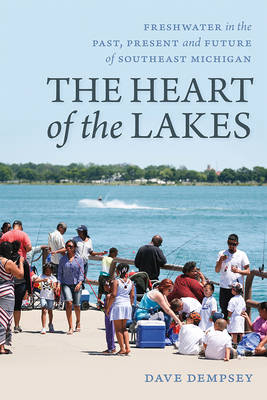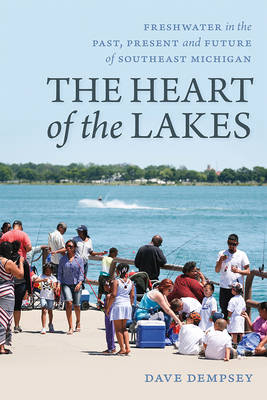
- Afhalen na 1 uur in een winkel met voorraad
- Gratis thuislevering in België vanaf € 30
- Ruim aanbod met 7 miljoen producten
- Afhalen na 1 uur in een winkel met voorraad
- Gratis thuislevering in België vanaf € 30
- Ruim aanbod met 7 miljoen producten
Zoeken
The Heart of the Lakes
Freshwater in the Past, Present and Future of Southeast Michigan
Dave Dempsey
€ 25,95
+ 51 punten
Omschrijving
The water corridor that defines southeast Michigan sits at the heart of the world's largest freshwater ecosystem, the Great Lakes. Over forty-three trillion gallons of water a year flow through the Detroit River, providing a natural conduit for everything from fish migration to the movement of cargo-bearing one thousand-foot freighters, and a defining sense of place. But in both government policies and individual practices, the freshwater at the heart of the lakes was long neglected and sometimes abused. Today southeast Michigan enjoys an opportunity to learn from that history and put freshwater at the center of a prosperous and sustainable future. Joining this journey downriver in place and time, from Port Huron to Monroe, from the 1600s to the present, provides insight and hope for the region's water-based renaissance.
Specificaties
Betrokkenen
- Auteur(s):
- Uitgeverij:
Inhoud
- Aantal bladzijden:
- 106
- Taal:
- Engels
- Reeks:
Eigenschappen
- Productcode (EAN):
- 9781948314046
- Verschijningsdatum:
- 1/06/2019
- Uitvoering:
- Paperback
- Formaat:
- Trade paperback (VS)
- Afmetingen:
- 152 mm x 226 mm
- Gewicht:
- 317 g

Alleen bij Standaard Boekhandel
+ 51 punten op je klantenkaart van Standaard Boekhandel
Beoordelingen
We publiceren alleen reviews die voldoen aan de voorwaarden voor reviews. Bekijk onze voorwaarden voor reviews.











